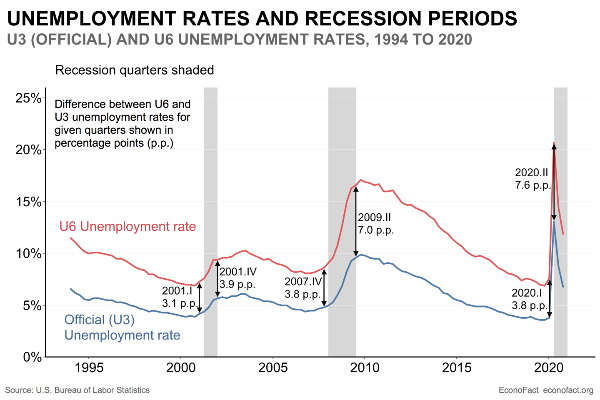This piece was originally published at Econofact. Read it in its entirety here.

The Issue:
The state of the labor market reflects the state of the economy and, even more importantly, the human cost of recessions or the benefits of booms. Accordingly, the unemployment rate is one of the most closely watched economic statistics. But it is becoming more widely recognized that the most frequently cited official unemployment rate misses a lot of people. Problems with measuring labor market slack have been particularly acute during COVID, as unemployment rates have dramatically understated the deterioration in the labor market, according to Federal Reserve Chairman Jerome Powell. Using an alternative measure of unemployment offers a more comprehensive view of labor market conditions by also including “discouraged workers” who have stopped searching for jobs and workers who are working part-time but would like to have full-time jobs. By this measure, downturns are even more damaging to the labor market than what one would conclude from considering the conventional, and more widely reported, unemployment rate.
The most cited unemployment rate does not capture the full extent of weakness in the labor market — and this is a bigger issue in recessions.
The Facts:
- The most widely reported unemployment rate is officially known as U3 unemployment and represents the number of people who are unemployed as a percentage of the labor force. For the purposes of U3, the unemployed are defined as those people who do not have a job, have been actively looking for work over the past 4 weeks and are currently available for work. People are considered employed if they did any paid work — this includes all part-time and temporary work as well as full-time employment. The labor force represents the sum of the unemployed and the employed (it excludes people living in institutions and active duty military personnel). The U3 unemployment rate is released on the first Friday following the end of each month and is based on a survey of about 60,000 households rather than a full tally of the entire population. It is calculated by the Bureau of Labor Statistics using information from the Current Population Survey conducted by the Census Bureau.